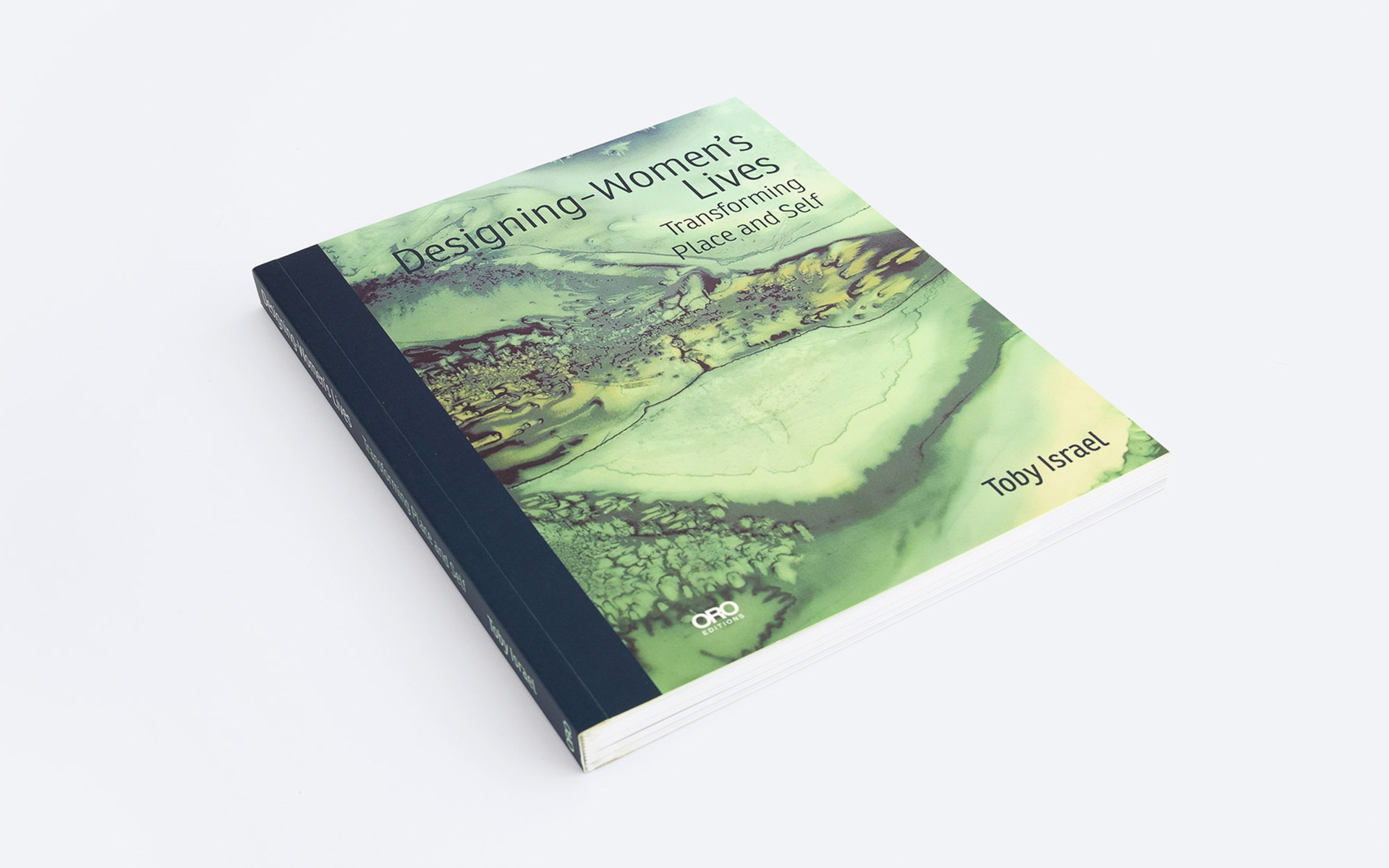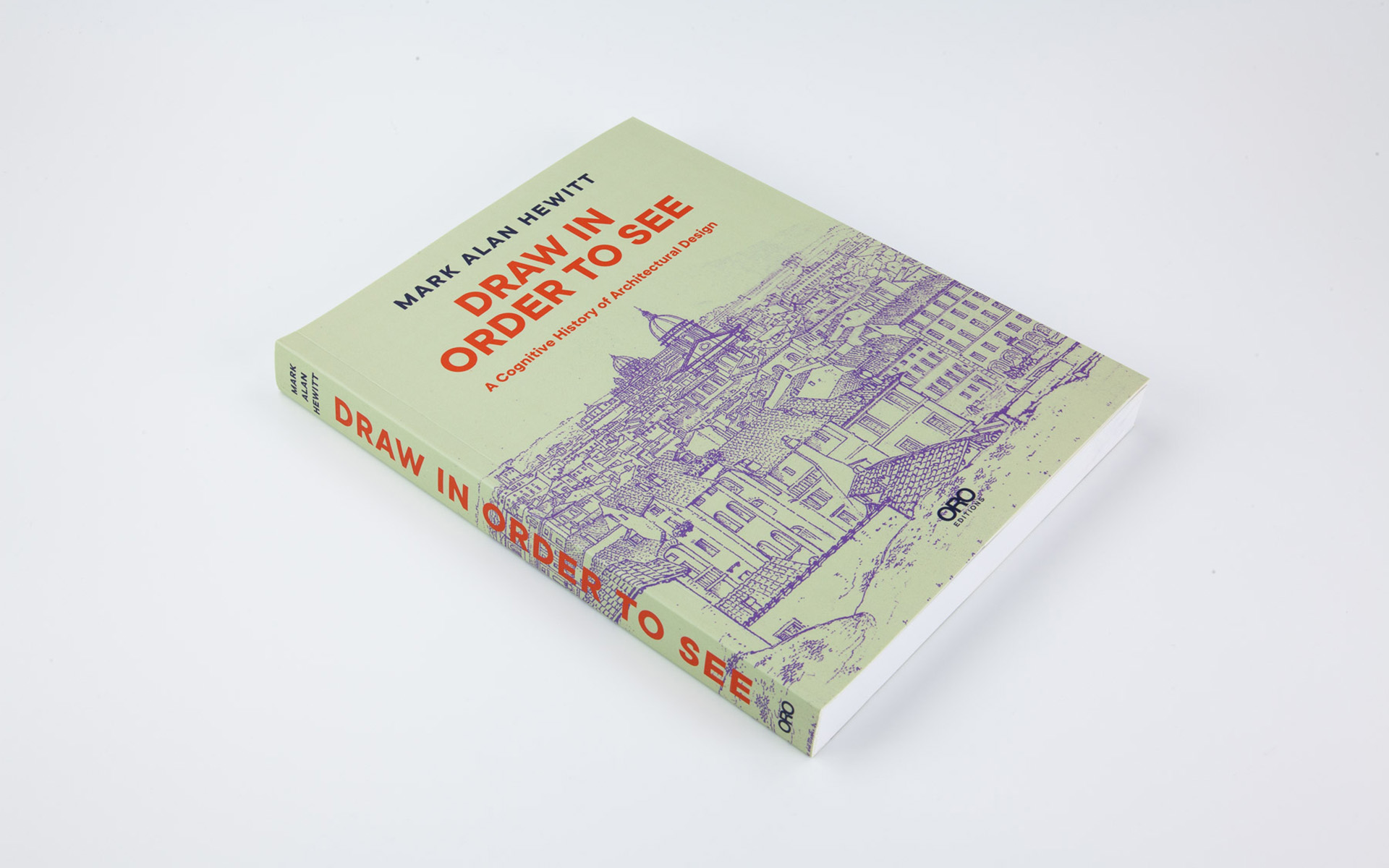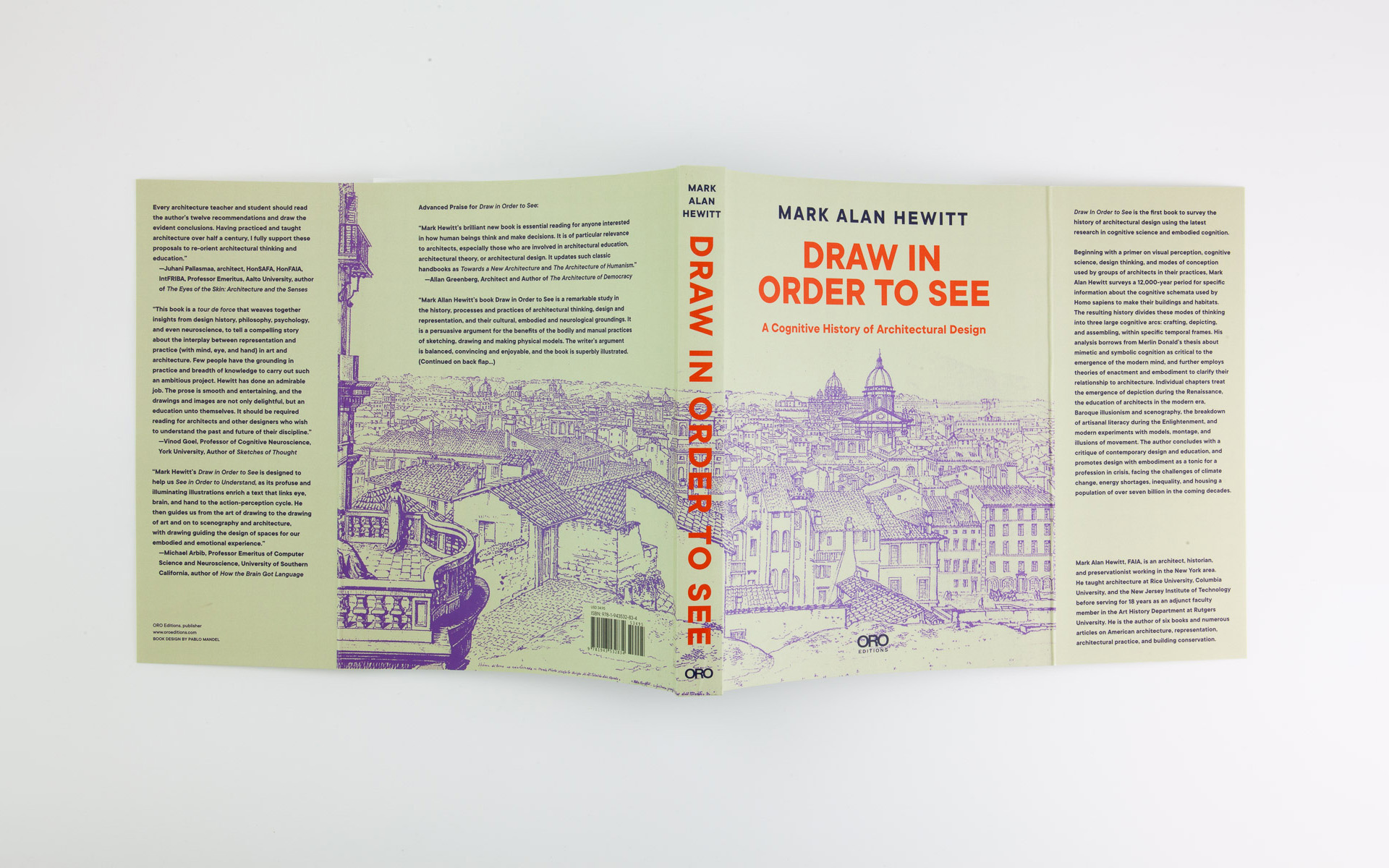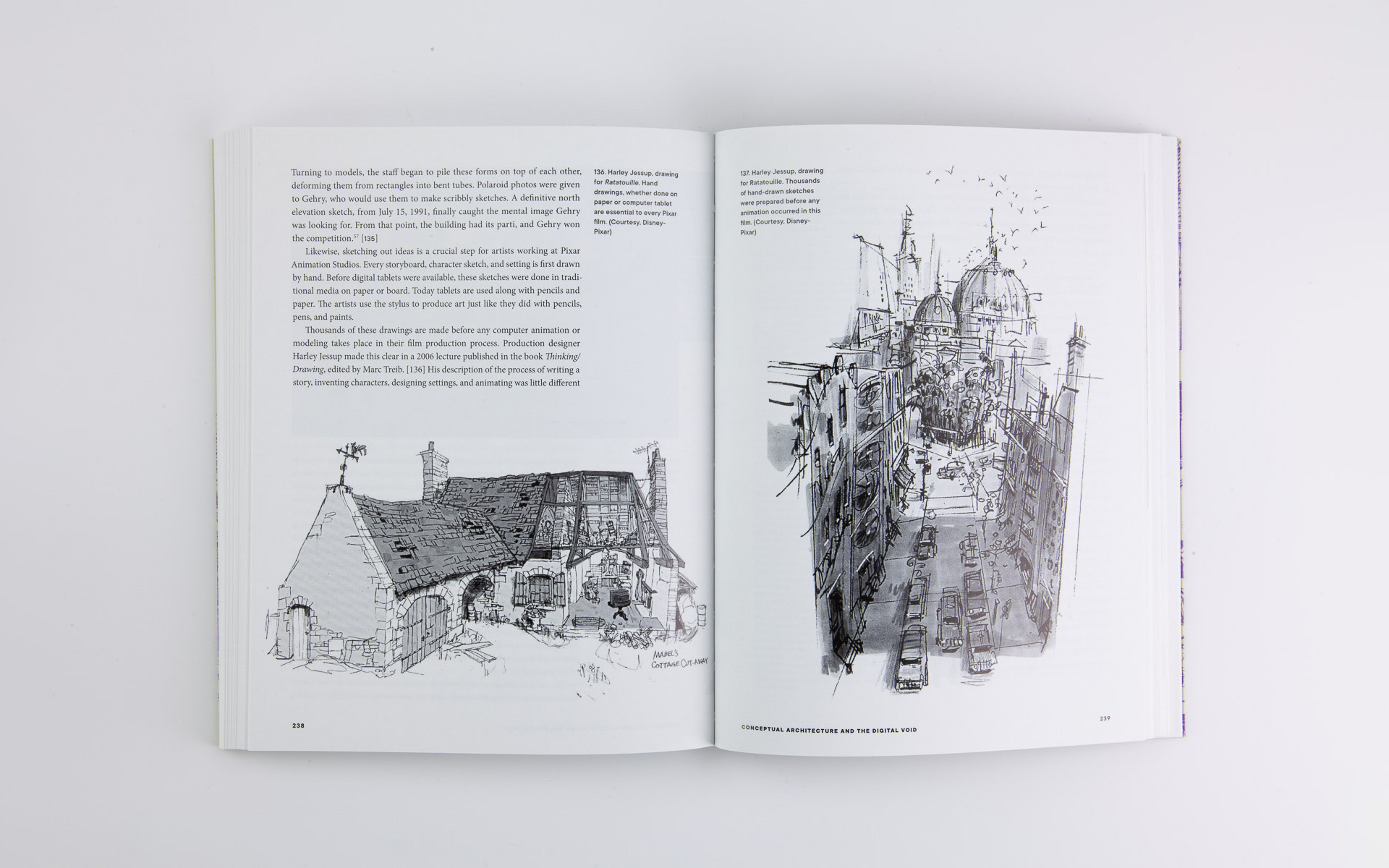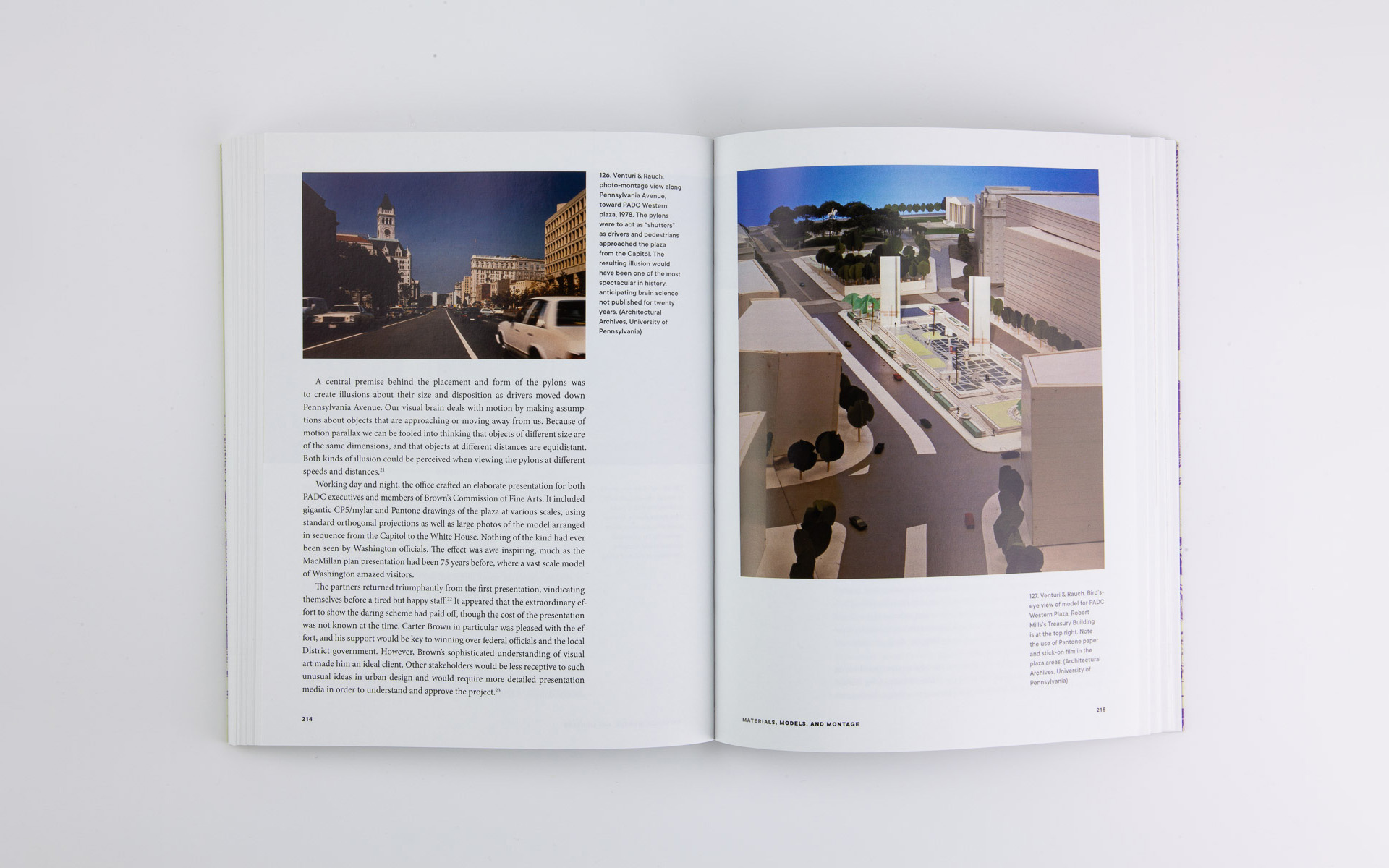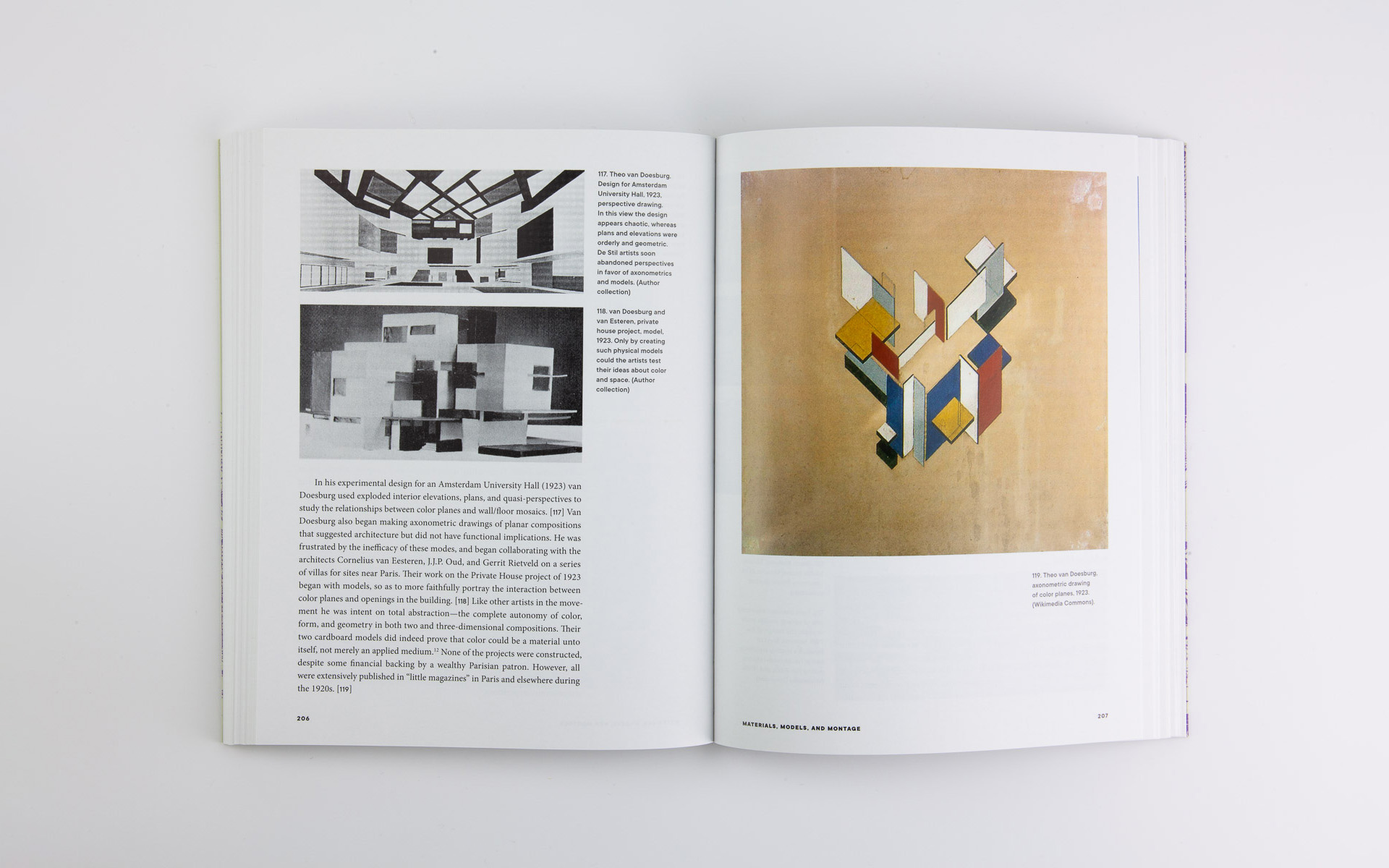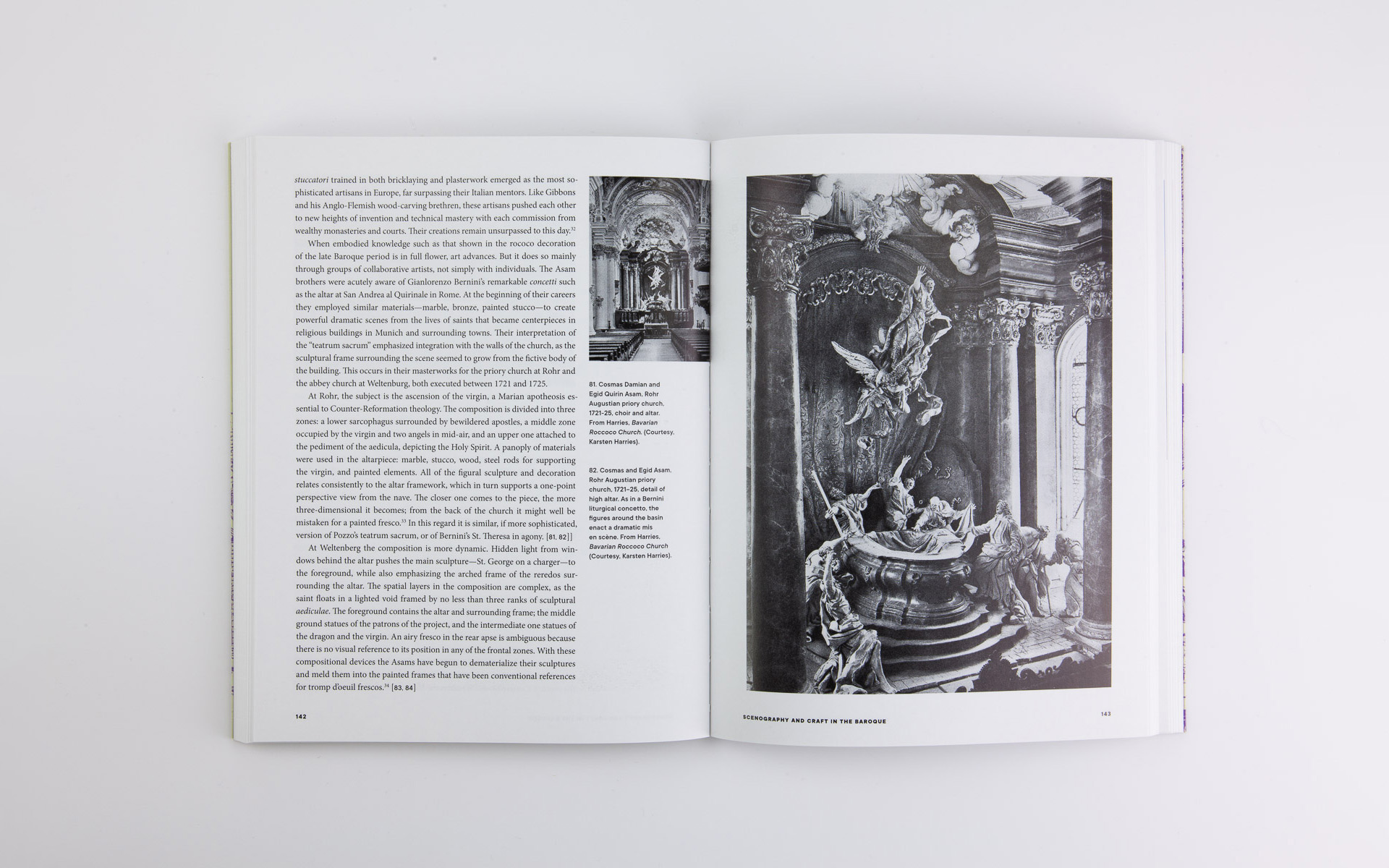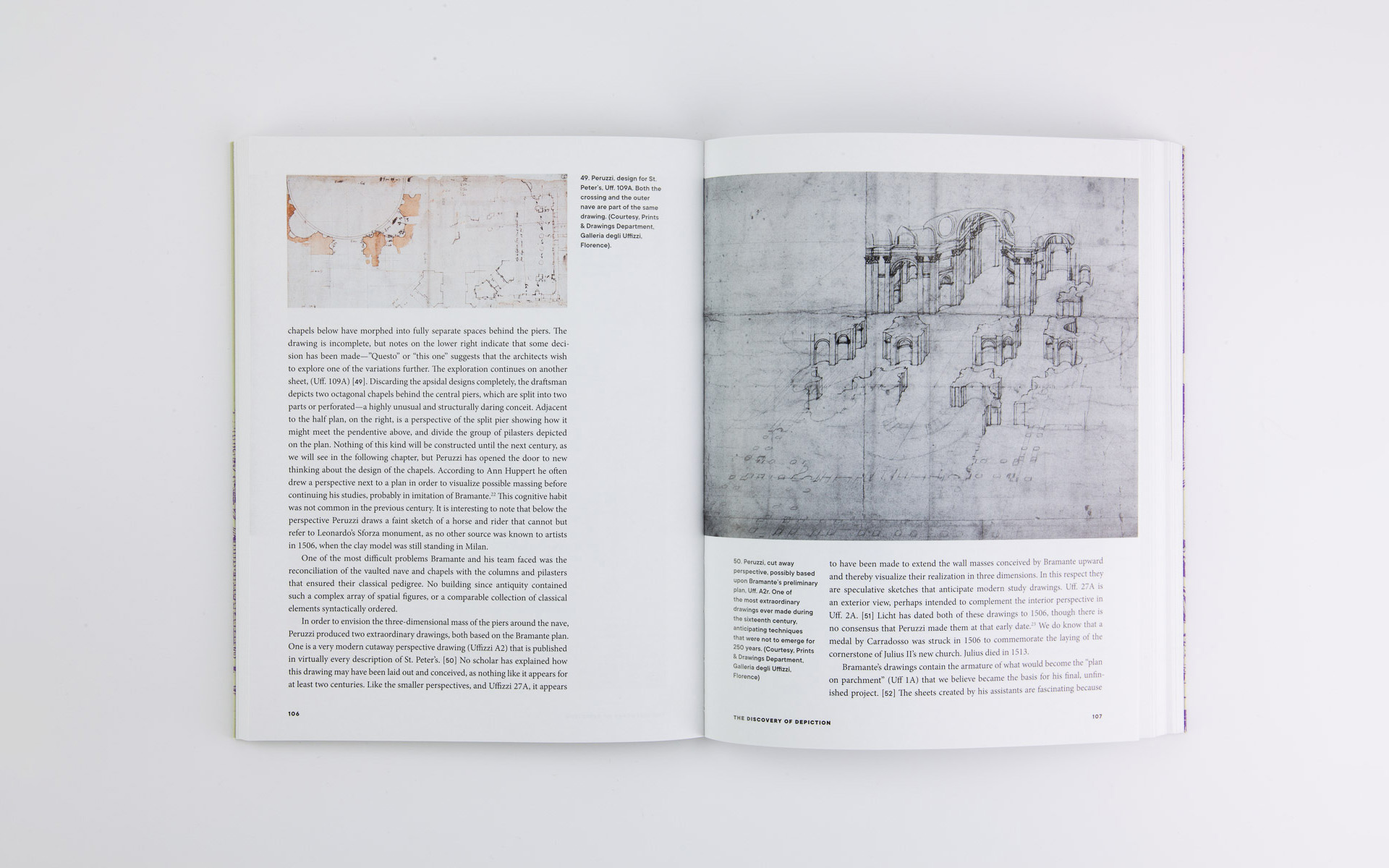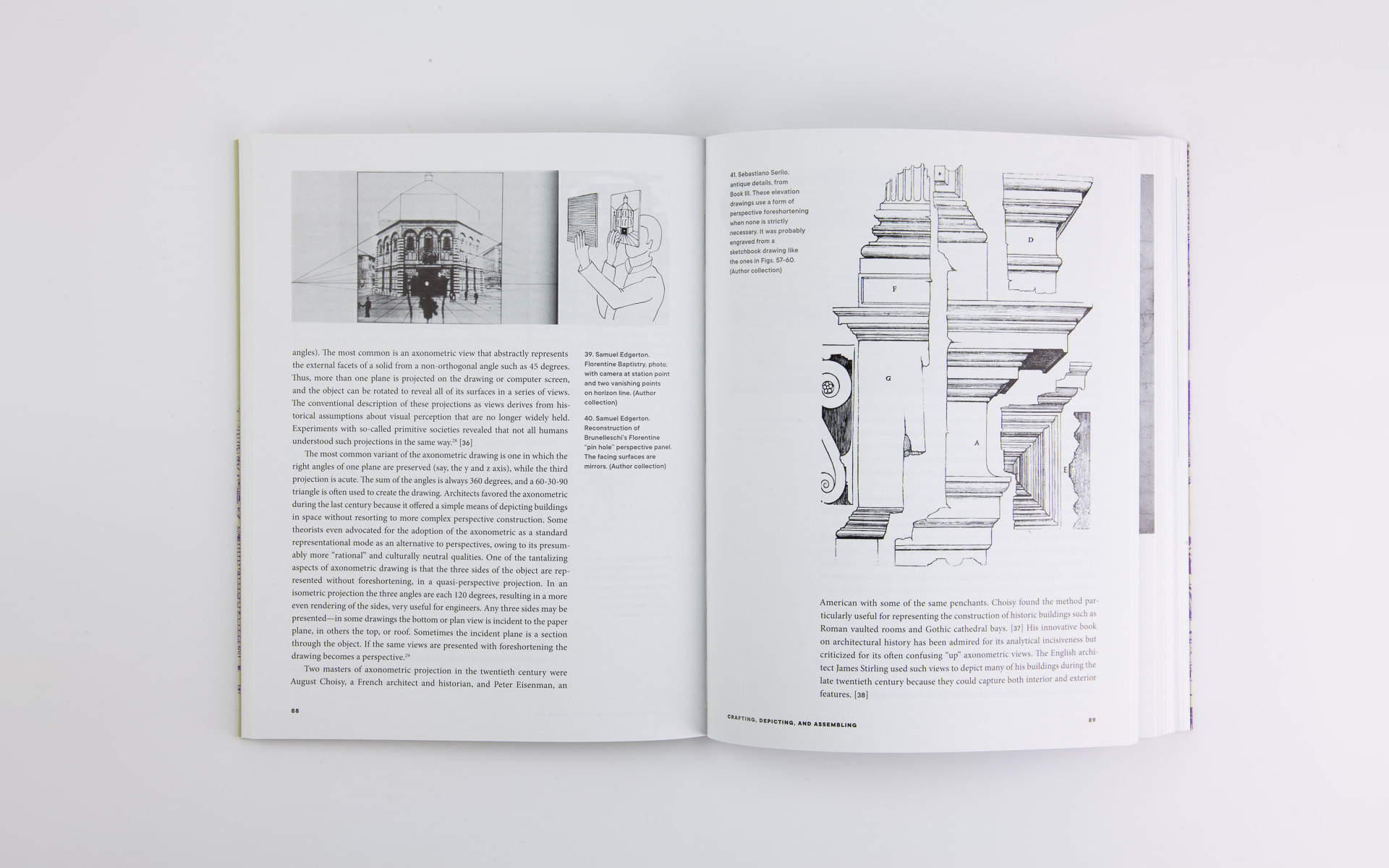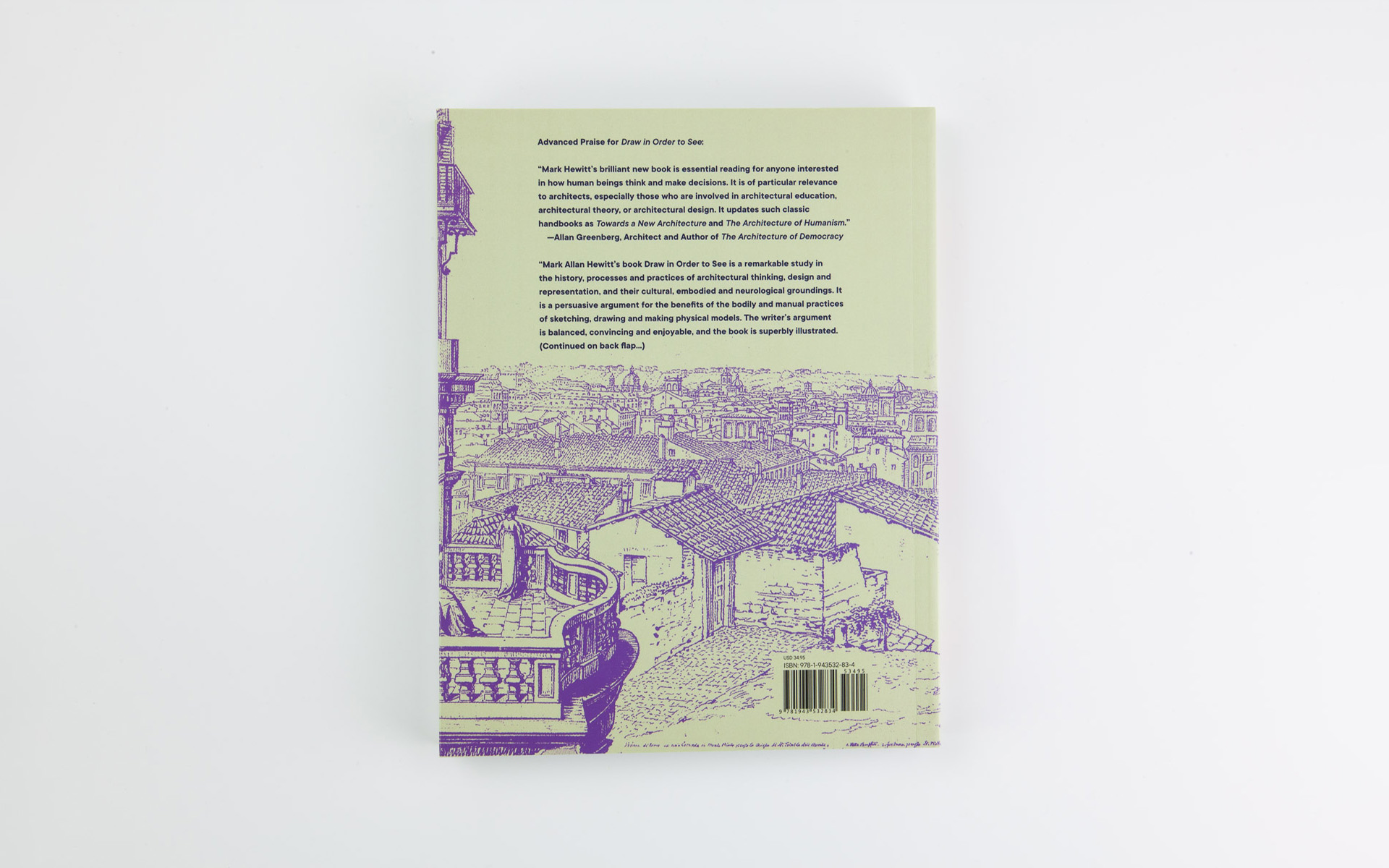Draw in Order to See: A Cognitive History of Architectural Design
by Mark Alan Hewitt
Publication Date: July 2020
Format: Softcover with flaps
296 pages
Publisher: ORO Editions
Size: 7″ × 9”
ISBN: 978-1943532834
Book design by Pablo Mandel
Draw In Order to See is the first book to survey the history of architectural design using the latest research in cognitive science and embodied cognition. Beginning with a primer on visual perception, cognitive science, design thinking, and modes of conception used by groups of architects in their practices, Mark Alan Hewitt surveys a 12,000-year period for specific information about the cognitive schemata used by Homo sapiens to make their buildings and habitats. The resulting history divides these modes of thinking into three large cognitive arcs: crafting, depicting, and assembling, within specific temporal frames. His analysis borrows from Merlin Donald’s thesis about mimetic and symbolic cognition as critical to the emergence of the modern mind, and further employs theories of enactment and embodiment to clarify their relationship to architecture.
Individual chapters treat the emergence of depiction during the Renaissance, the education of architects in the modern era, Baroque illusionism and scenography, the breakdown of artisanal literacy during the Enlightenment, and modern experiments with models, montage, and illusions of movement. The author concludes with a critique of contemporary design and education, and promotes design with embodiment as a tonic for a profession in crisis, facing the challenges of climate change, energy shortages, inequality, and housing a population of over seven billion in the coming decades. This groundbreaking and valuable study presents a clear view of current research in two related fields that have not heretofore been compared, and outlines a strategy for future research. An extensive bibliography offers readers an up-to-date reference to both the science and the architectural history behind the text.
- Categories:
